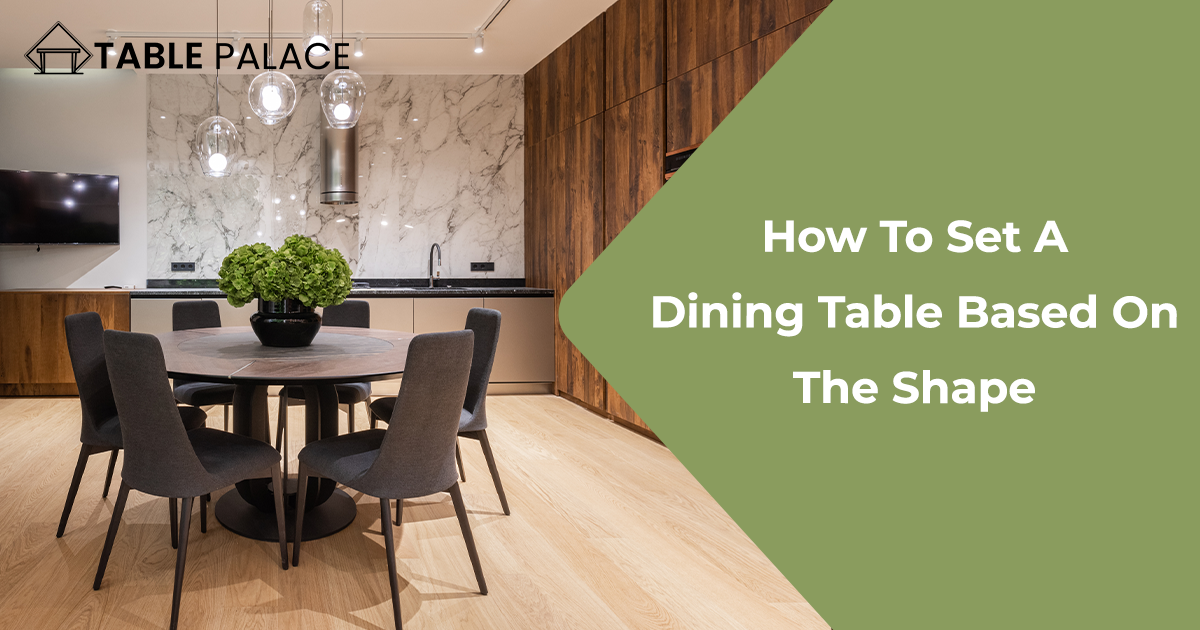How frequently do you arrange your dining table for meals? While it may not be a routine practice for everyday dining, adorning your dining room table can be a delightful way to elevate the ambiance for family and friends during brunches, dinners, and other social gatherings.
There are various approaches to setting a table, and the design of your dining room furniture can guide the way you embellish your table. For instance, you might opt for a setting that accentuates length for a rectangular dining table, whereas a square dining table might call for a more casually adorned arrangement with smaller accents.
When preparing a dining table, you can select accents, accessories, and patterns that align with and enhance the size and shape of the table. For instance, longer decor and geometric patterns tend to complement rectangular tables, while circular tables often benefit from smaller, circular decor for a charming effect.
Rectangular Dining Tables
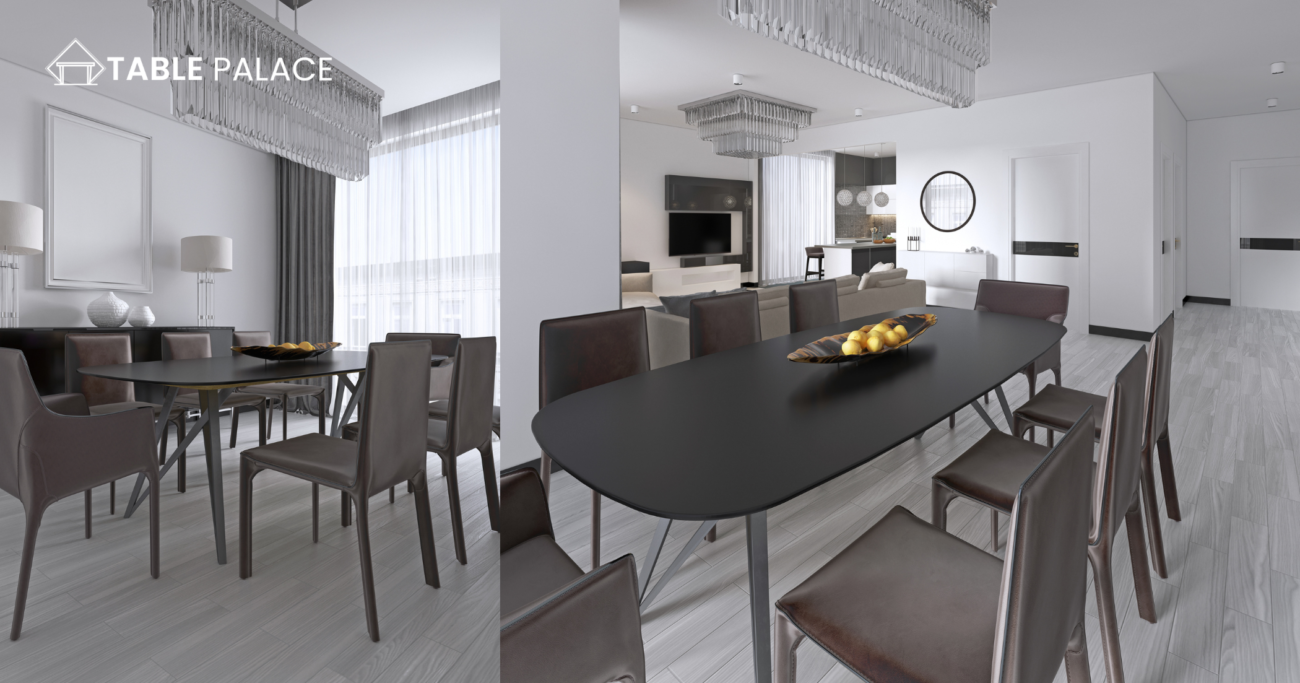
Despite their imposing size, rectangular dining tables are akin to gentle giants. The key to setting and embellishing these longer tables lies in using decor that accentuates their sleek and robust lines.
To enhance the table’s shape, consider placing an elegant runner along the center, creating a cohesive element in your table setting. Opting for long, low flower arrangements that extend horizontally can further emphasize the distinct lines of your rectangular table.
For a refined touch, neatly folded cloth napkins and matching placemats featuring simple colors and patterns can subtly highlight your setting and harmonize with other decor in your dining room. To introduce a touch of drama, elevate the ambiance with evenly spaced candle holders or candelabras that add height to the overall setting.
Round Dining Tables
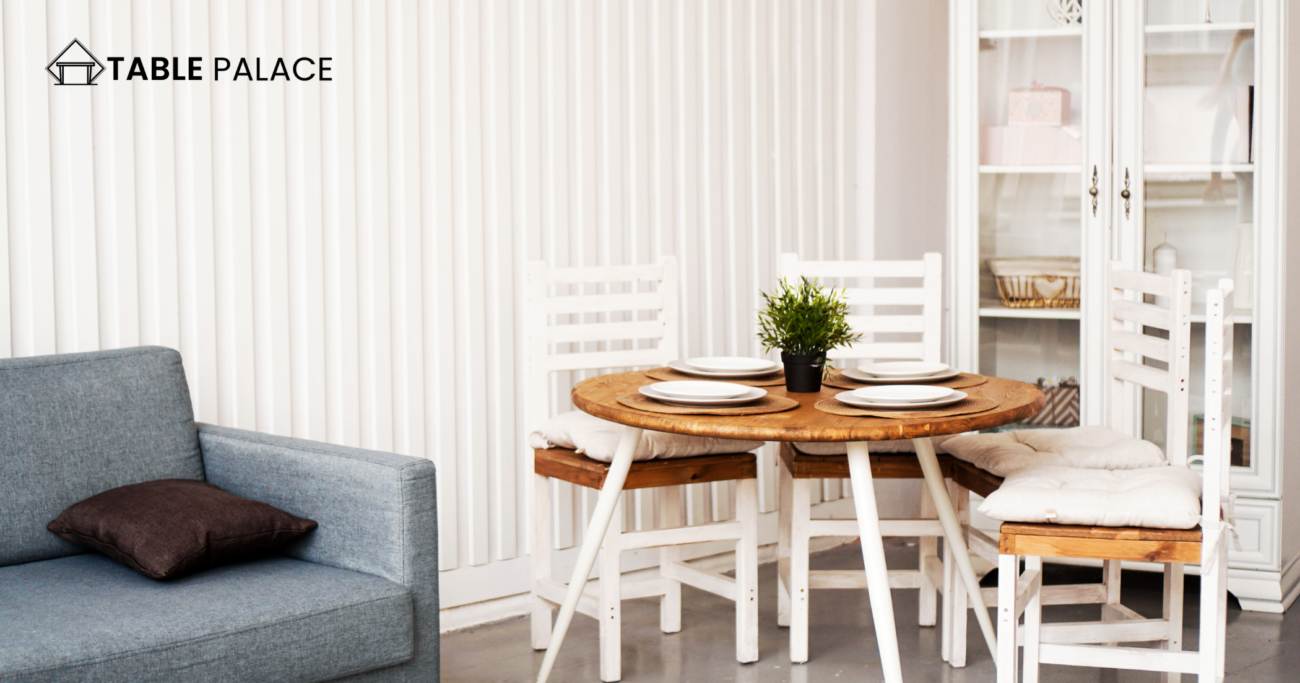
Round dining tables thrive when adorned with decor that complements their organic shape. Naturally, a circular tablecloth and placemats are recommended, and you can further enhance the aesthetic by incorporating decor with round or curved patterns and designs.
Creating a captivating focal point, centrepieces play a vital role in circular table settings, contributing to the cozy atmosphere characteristic of many round tables. Depending on the size of your circular table and the available space beside your dining ware, consider arranging round candle holders in a circular pattern around the table, near each dining setting, adding an extra touch of visual appeal.
Square Dining Tables
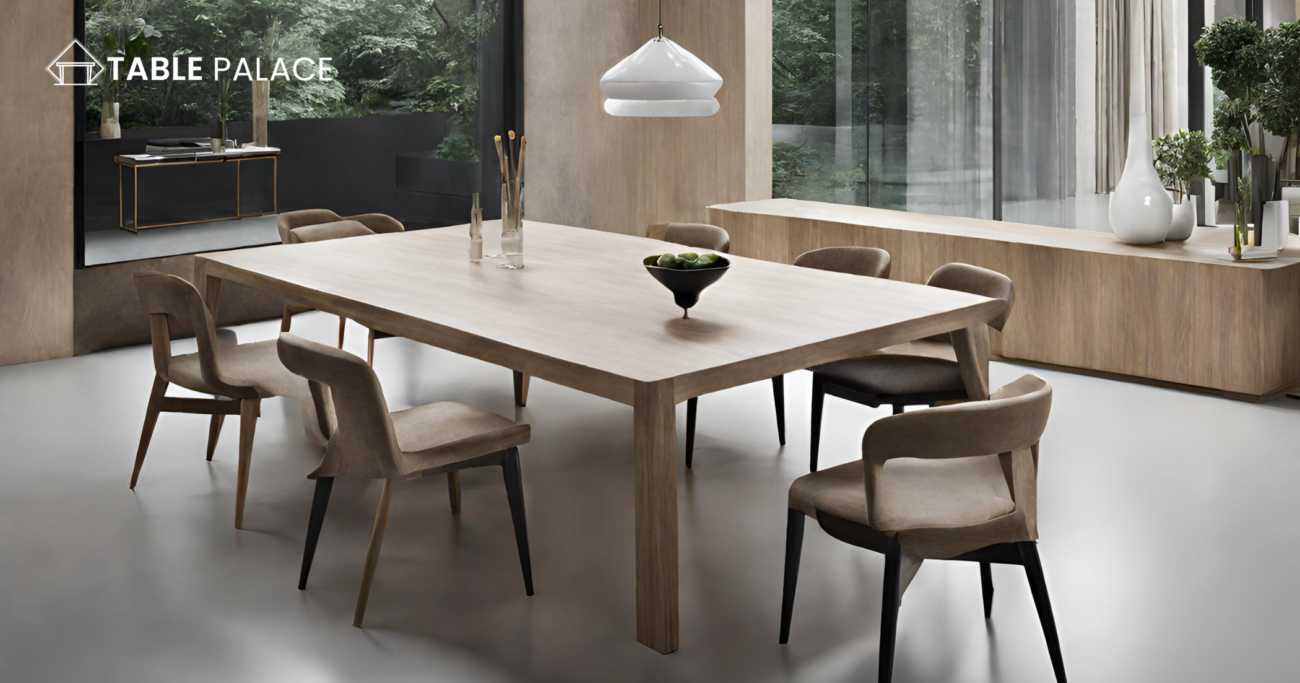
For a square-shaped table arrangement, it’s essential to incorporate decor and accent pieces that highlight its clean lines without overwhelming the available space. If you happen to have a square dining table with an extendable leaf to transform it into a rectangle, opting for versatile decor suitable for both settings is a wise choice.
Runners can effectively complement square dining tables if appropriately sized. While rectangular placemats can still work, opting for smaller, square placemats is a more fitting choice.
Given their generally smaller size, square tables can be enhanced with attention-grabbing centrepieces like floral arrangements or a singular candelabra. Consider exploring decor with geometric patterns to harmonize with the clean lines of your square table, or explore other square and rectangular accent pieces to create a cohesive look throughout your dining room.
Oval-Shaped Tables
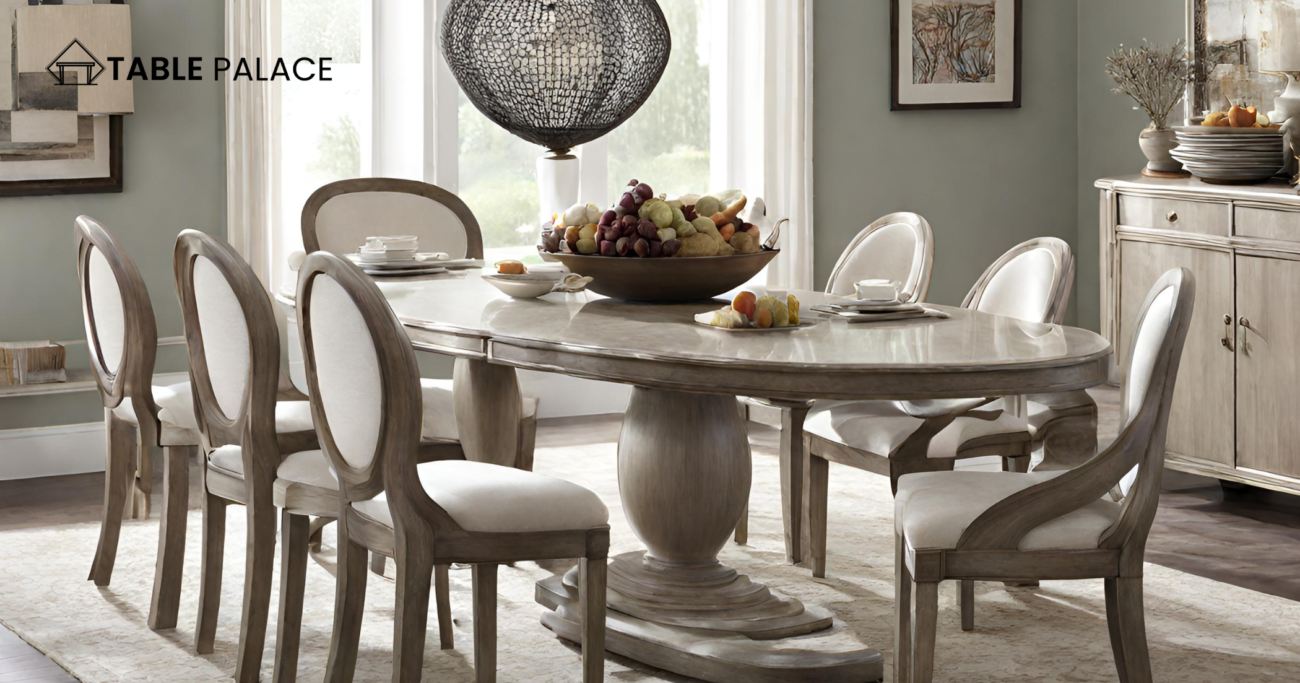
An oval dining table serves as a hybrid between rectangular and round tables, and in certain instances, there are round tables equipped with a leaf to elongate into oval-shaped tables. Similar to round tables, it is recommended to embellish an oval table with decor that complements its distinctive shape.
Rather than using a rectangular or circular tablecloth, consider opting for a specifically designed oval-shaped tablecloth to enhance the table’s form. To introduce a uniquely organic sense of movement, arrange cascading greenery or vines down the center of the oval table.
In some scenarios, achieving a balance between the length and circular shape of an oval table can be achieved by incorporating a single large centerpiece or two medium-sized centerpieces. This approach contributes to an aesthetically pleasing arrangement for your oval-shaped dining table.
Freeform Dining Table
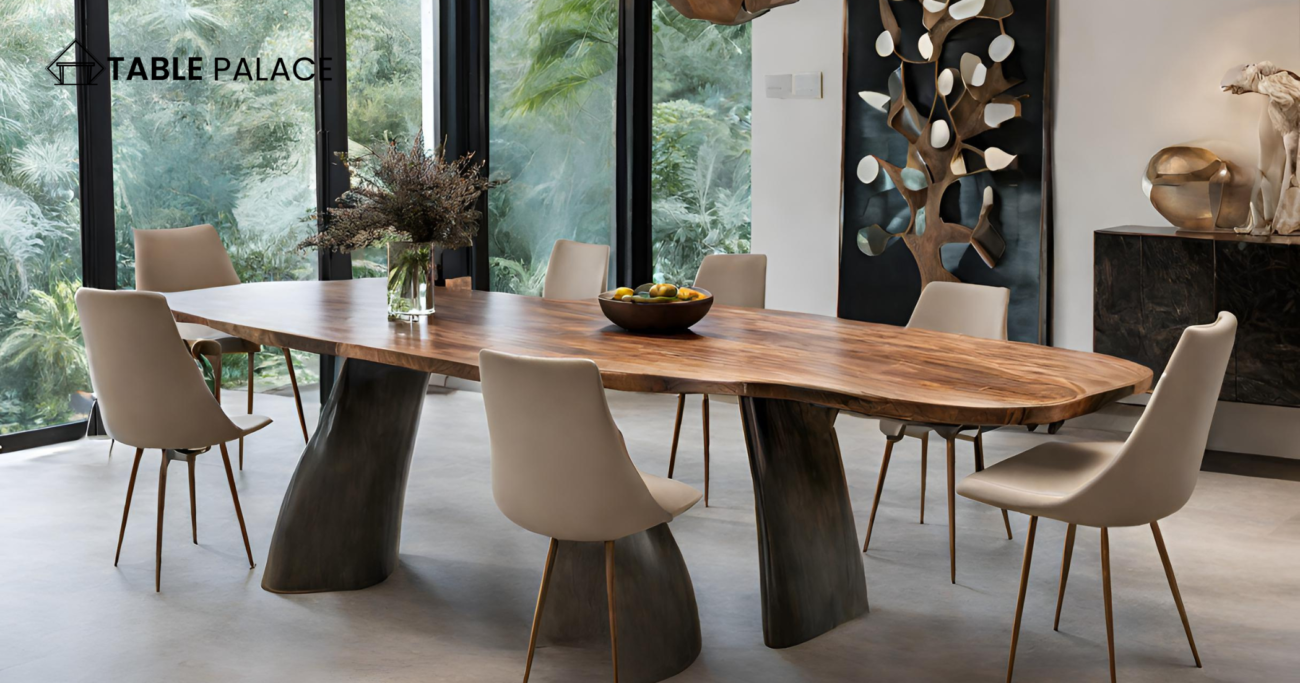
A freeform dining table, characterized by its lack of a uniform shape, opens up endless possibilities for creative table settings. Consider selecting decor with irregular shapes or mixed patterns to accentuate the distinctive design of your table. Alternatively, you can opt for simple decor that directs more attention to the iconic and unique shape of your table.
What Are The Different Types Of Dining Table Settings?
Arranging a table can be akin to an art form, allowing ample space for experimentation with your distinctive settings. Yet, for inspiration or a straightforward guide on where to place a salad fork, it’s often beneficial to start with the three fundamental setting styles: basic, casual, and formal.
Basic Table Settings
In a basic table setting, a placemat anchors the arrangement with a plate centered upon it. To the left of the plate, position a napkin with a fork placed on top, while on the right side, place a knife. A glass can be situated to the right of the plate, above the knife on the table.
If the meal requires the use of a spoon, include it in the setting accordingly. Otherwise, a spoon is not necessary for a basic table setup.
Casual Table Settings
Casual table settings are perfect for entertaining guests during brunches or dinners when you want to add a touch of elegance.
To enhance a basic table setting, introduce a casual touch by placing a salad plate or soup bowl on top of the dinner plate, particularly if you are serving salad or soup. Additionally, consider incorporating a second glass, be it a wine glass or another specific glass suitable for the beverage being served. This approach adds an extra layer of charm to your casual table arrangement.
Formal Table Settings
Formal table settings are reserved for intimate meals or special gatherings where the aim is to truly impress your guests. These settings are particularly suitable for meals with multiple courses and typically feature a charger—a decorative presentation plate—positioned beneath the dish or plate intended for the guest’s use.
Unlike casual settings, formal table settings usually omit placemats, although a circular placemat might be utilized beneath a charger. To accommodate the various courses of a meal, specialty dining ware is often included, such as a salad fork placed to the outer side of the dining fork or a dessert spoon positioned above the charger.
In more elaborate setups, each guest may receive a personalized place card, along with individual salt and pepper shakers. Separate glasses may be provided for red and white wine. The setting may also include a bread plate, completing the refined arrangement of a formal table setting.
How Do You Choose The Right Shape For Your Dining Table?
Selecting the appropriate shape for your dining room table involves considering two crucial factors: the dimensions and layout of your dining room and the number of guests you anticipate entertaining.
In more spacious rooms where you plan to host over 4 guests, consider a rectangular or oval table, or opt for a larger round dining table to accommodate more seating, depending on the room’s size. For more intimate gatherings in smaller rooms, a square or round table tends to create a cozier atmosphere.
Another practical option is to choose dining tables equipped with an insertable leaf. This feature allows the table to expand in size, providing flexibility to select the right shape and size for your current needs and adjust as those needs evolve over time.
Conclusion
The art of setting a dining table is a versatile and creative endeavor, with various styles catering to different occasions and preferences. Whether opting for a basic, casual, or formal setting, the arrangement of placemats, cutlery, glassware, and decor can elevate the dining experience. Each table shape—be it rectangular, round, square, or oval—offers distinct possibilities for enhancing the aesthetic and functionality of the dining space.
Considering the size and shape of the room, along with the number of guests expected, guides the choice of the ideal table shape. The inclusion of practical features, such as insertable leaves for table expansion, adds an element of adaptability to meet changing needs over time. With these considerations in mind, setting a table becomes a delightful blend of artistic expression and practicality, enhancing the overall enjoyment of shared meals and gatherings.

